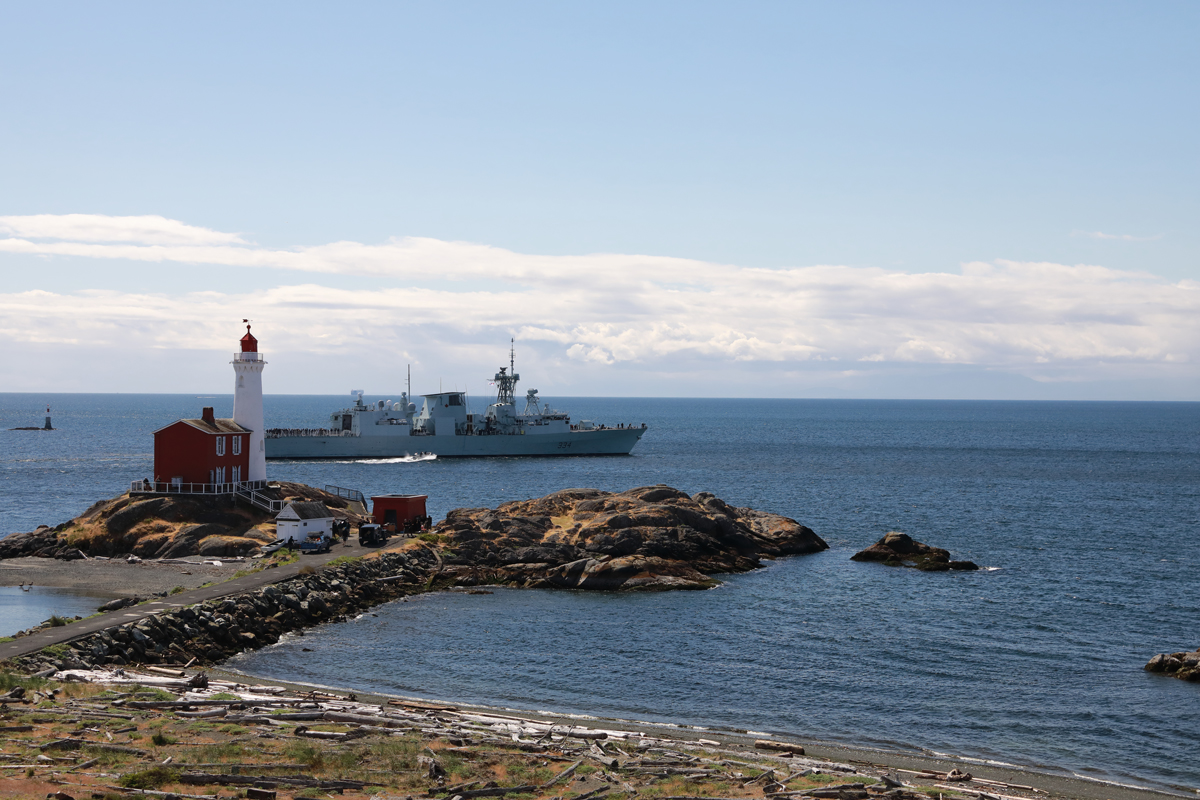Jackspeak: Buoys and Lights
By Lookout Production on Dec 01, 2022 with Comments 0
Mark Nelson
—
An entire category of nautical vocabulary is dedicated to keeping a ship in safe waters, not aground or on the rocks. Resting upon or touching the sea bottom is referred to as a grounding, which is one of the worst outcomes for a ship, sometimes leaving a vessel high and dry until the tide comes in or unable to continue. Touch and go describes a minor grounding, where the ship can continue its progress. Intentional grounding may be referred to as beaching, so a vessel may load and unload (as with a landing craft) or possibly prevent a badly damaged vessel from sinking.
When a ship enters coastal waters, the Officer of the Watch needs to pay attention to the aids to navigation that is specifically intended to assist in determining a vessel’s position or safe course or to warn of dangers. Buoys are used to mark navigable channels, hazards to shipping, and anchorages. In Canada, we pronounce ‘boy’ and not the American ‘boo-ee’.
When travelling up a channel, Port hand buoys are coloured green, marked with odd numbers, and should be kept on the port side. Starboard hand buoys are coloured red, marked with even numbers, and should be kept on the starboard side. A bifurcation buoy marks the division of a channel. Fairway buoys indicate safe water. Cardinal buoys indicate the safest water using the cardinal points of a compass (north, south, east and west). Some buoys are distinctly shaped for visual identification, such as a square-shaped can buoy or a cone-shaped nun buoy, resembling a nun’s habit.
Light buoys display light to be visible at night. Bell buoys are designed to be heard when visibility is diminished and include a bell with hammers that clang with wave action. Most buoys have a radar reflector; a diamond-shaped metal accessory meant to boost the amount of energy returned when painted by radar.
A beacon is a fixed aid to navigation. Maybe the best-known type of beacon is a lighthouse. Some are picturesque structures familiar to Royal Canadian Navy sailors, such as Fisgard Light at the entrance to Esquimalt Harbour or lighthouses on Georges Island and Maughers Beach at the entrance to Halifax Harbour.
Every left-coast sailor knows the sight of Race Rocks Light, located on Race Rocks just off the southern tip of Vancouver Island. Built in 1860 and constructed of granite quarried in Scotland, it was one of the first lighthouses built on the west coast of Canada. Soon after the light went into service, the first lightkeeper, George Davies, painted the tower’s distinctive black and white stripes. The stripes, meant to improve its daytime visibility, remain to this day. Race Rocks refers to the tidal race that swirls past the collection of islets at speeds of up to eight knots. Due to the treacherous waters, vessels steer clear, making it a quiet respite for sea birds and seals.
You will find over 4,000 examples of Jackspeak in my book Jackspeak of the Royal Canadian Navy (2nd ed.).
The author of ‘Jackspeak of the Royal Canadian Navy’ and ‘Whiskey 601’, Mark Nelson developed a love of the Navy’s language and lifestyle over his 26-year career in the service. After retiring as a Chief Petty Officer Second Class, he now works as a Library Systems Specialist at Red River College Polytechnic in Winnipeg, Man.
Follow Mark on Twitter @4marknelson
Filed Under: Top Stories
About the Author:






